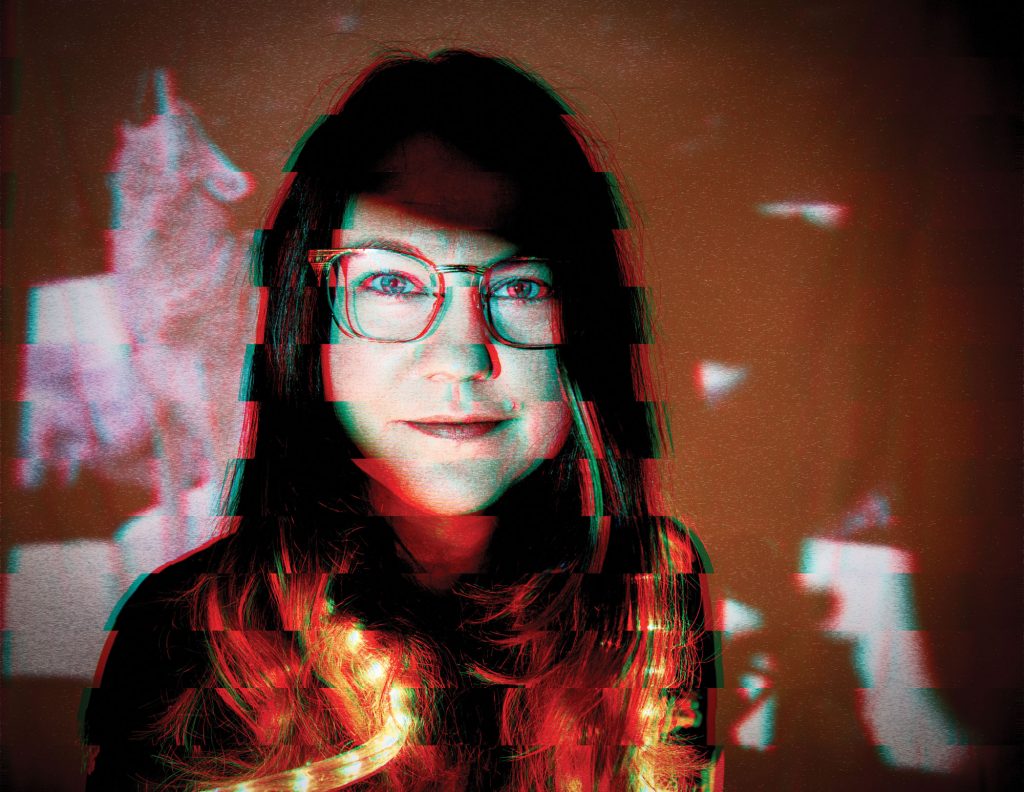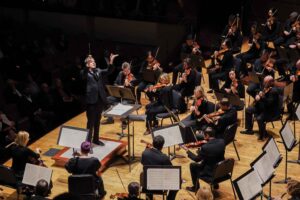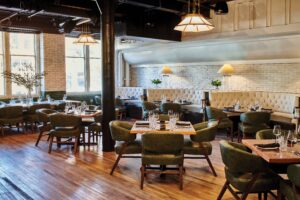Artist Melissa Robert Yes
By Brett Levine // Photo by Beau Gustafson
In an age of shoegaze, chanteuses, and related ennui, it’s almost impossible to remember that musical optimism is always simmering just below the surface. It’s stuttering in the syncopated rhymes of hip-hop icons Grandmaster Kaz, and DJ Cool Herc, who each tell us, “Yes Yes Y’all” just as surely as it forms the lyrical foundation of house music legend Carl Cox’s uncontrollably uplifting refrain “oh yes, oh yes.” But that same sentiment doesn’t always cross over to the visual arts. So, it seems somewhat surprising to find an artist making complex, critical, and conceptual works at the same time that she asserts this sentiment in her very name: Melissa Robert Yes. Yes, you say? Actually, Yes.
And Yes channels this subtlety into a practice that is as exploratory, and as sophisticated, as her name seems simple. As she explains, “I studied sculpture, and I’m not anti-object, I’m just rethinking my use of materials.” This might give some people cause for concern, but Yes puts the question into an even more intriguing context: “I’ve made a lot of sculpture over the years—I even stored it in a storage unit—and it’s probably all in a landfill now. I still love art, and I still love art objects, but I started to think more about the idea that pixels, data, and information are all just different types of materials.”
Some of these revelations occurred over the course of a Master’s degree that included a studio assistantship with renowned artist Ann Hamilton, as well as interdisciplinary study with creators including composer Marc Ainger. There, Yes began to work with Max/MSP, a programming language for music and multimedia, learning to create her own audio instruments. Having trained as a drummer and percussionist, Yes explains that “music has always been a part of my process.” This led to a Flam-Lamp (studio session), in which she deconstructed a drum set, recorded the process, used the sounds to create a composition, reconstructed the pieces on a racquetball court, and played the soundtrack in concert with the actual sounds from the adjacent courts. Yes values this approach.
“I like to take a structure that is intact,” she says, “destroy it (physically or digitally), then put it back together in a new way.”
Having been raised in Huntsville, Yes has turned this approach on her own history. “I went to Challenger Middle School, then Grissom High School,” she begins, “so space has always been part of my sense of Americanness. I’ve also always been engaged with ideas surrounding American history, particularly Manifest Destiny, and the question of solitude in relation to the grand landscape.” The idea of ‘space’—in its many manifestations—began to emerge in her practice. “I had a vision of myself riding through the desert on a horse dressed as an astronaut, and I didn’t really know what it meant at the time…”
Her six-channel, multi-media performance and installation was the result. This immersive environment bridges and extends traditional understandings of the boundaries of specific media. Part video project, part audio work, part performance, Space Program is serious and humorous, overwhelming in its simplicity, and incomprehensibly vast in its seemingly confined presentation. It is this series of apparent contradictions that truly makes Yes’ works so fascinating. She is a skilled digital, video, and audio artist, as comfortable working with the process-based repetition of constructing an image in Photoshop as she is constructing the persona of artist as astronaut on a horse moving across the ‘space’ of the desert. And, she is a sculptor as enamored of objects as she is committed to the ephemeral—the vacuum-sealed flight suit is arguably slightly…less…? significant than the vast array of self-engineered solar panels that allow her to travel through space itself.
Just as advances in postwar technology promised the “house of the future,” Melissa Yes has immersed herself in contemporary technology, becoming “a person who works as a digital artist, but approaches the questions spatially and conceptually like a sculptor might.” Her work in installation and video mean that she can combine digital technology with objects to create works filled with humor and play.
When asked what she regards as the biggest challenge facing creatives in Birmingham, Yes pauses, then says, “I think the biggest problem facing creatives in Birmingham can be resources: time, space, and money.” To work with, through, and around the challenge, she has partnered with Ann Trondson and Ryan Meyer to form Vinegar, “a collective working in several ways to make art happen in Birmingham.” Their first project premieres on December 8.
And, asked to distill her project into a short description, Yes—a forthright and deeply engaged thinker—responds in an unexpected way, saying, “I would say sincere absurdity, but absurd sincerity is probably truer.” Since it would be difficult to say it better, in the words of house legend Carl Cox, “oh yes, oh yes.”•



